We’re hell raising and we don’t need saving ‘cause there's no salvation for a bad boy
Don't wanna be here? Send us removal request.
Note
Where is Julian Del Pilar?
Hello! I'm assuming this is a question about what happened to Julian after Dagupan so I'm answering it this way.
Julian didn't join Gregorio to Tirad because he was sent back to Bulacan. He became a Military Governor of a portion of Bulacan and kept leading attacks against the Americans until Aguinaldo's capture (presumably).
There aren't a lot of info about what happened to him after the war. We're sure he had at least one child (a daughter) but we don't know her name nor of his wife . He also became the first kabesa de barangay of Pitpitan, Bulakan. His house actually still stands beside the Barangay Hall in Pitpitan. (Source)

He died on January 29, 1919 at the age of 46. His grave can also be found in Pitpitan, Bulakan. No known details for the cause of his death. (Source of the photo)

I had plans of making an in-depth blog post on Julian del Pilar (similar to what I did for Capt. Juan del Pilar) but never got to write it. I might get back to it because of this so thanks for asking!
And if anyone has any leads or sources about Col. Julian del Pilar, please let me know!
19 notes
·
View notes
Text
Hello! Kamusta?
Hala, ang dami pa palang nakakakita nitong blog na ito pati yung mga posts ko. Pasensya na talaga at inactive na ako rito. Pero tingnan natin.
Salamat sa lahat ng mga likes, bisita, at ask messages. Sana itong munting blog ko na ito ay nakatulong sa pagkilala kay Gen. Gregorio del Pilar at sa ating kasaysayan 🙏
8 notes
·
View notes
Note
Why was he particularly disturbed by Manuel Bernal’s words?
I really hope this isn't a reaction paper homework kind of question haha. Also, disclaimer that this is my own interpretation of the movie Goyo.
It's already evident in the movie that he was disturbed by Manuel's words because he knows deep inside it's true. While it's true that Goyo had strong nationalistic ideals, he saw Aguinaldo as a representation of it. Which led his loyalties to lie with Aguinaldo.
5 notes
·
View notes
Note
PHYSICAL APPERANCE GOYO
Hi! Sorry, super late reply. I'm already very inactive here 😅
Did you mean how did actual Gregorio del Pilar look like? If yes:

Then for a description in words, here's what Rafael Palma said about him:
"Of medium height, of fair complexion, with somewhat brown eyes, a well-formed nose, fine lips, and a graceful body, he was handsome in all sense of the term." (Source: "An Acceptable Holocaust: Life and Death of a Boy General" by Teodoro M. Kalaw)
For his height, the autopsy of his remains estimated him to be around 165cm tall. (Source: 73 bones, 33 teeth by Ambeth Ocampo)
I hope this helps!
#omg mag nagmemessage pala sa akin dito#sorry inactive na po talaga ako huhu#replies#about: gregorio del pilar#gregorio del pilar#philippine history
13 notes
·
View notes
Photo


Gen. Gregorio del Pilar’s statues in his hometown of Bulakan, Bulacan
Photos taken by the Admin during her visit to Bulakan two years ago
#gregorio del pilar#about: Gregorio del Pilar#MALIGAYANG KAARAWAN HENERAL#philippine history#gt posts#bulakan#nakakamiss ding bumisita ng bulakan#sana ok kayong lahat mula sa bagyo
5 notes
·
View notes
Note
What are his letters to remedios?
Hi! Super sorry for the late reply (ask messages aren’t notifying for me anymore... weird...). But there are no known surviving letters between Goyo and Remedios. The letter Remedios was reading in the movie is fictional.
3 notes
·
View notes
Text
Looking for Juan del Pilar
A long post on what records say about Gregorio del Pilar’s little known relative.
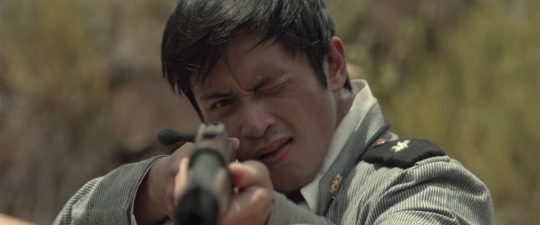
Disclaimer: Any opinions stated in this post are based on my interpretation of the sources I found. If there are more decisive sources, feel free to send them my way. This is also cross-posted as a long Twitter thread, with revisions done on this version.
Very little is known about Juan del Pilar. Even Carlo Cruz, the actor playing Juan, mentioned that material about Goyo’s cousin are lacking.
In the movie Goyo: Ang Batang Heneral, he was first introduced as the cousin who shot at Goyo’s group swimming in the river. According to Vicente Enriquez from the Kalaw biography, while some swimming and shooting did happen, the relative wasn’t named.
“I have never seen Del Pilar nervous except once in Dagupan. The following happened: During one of our inspection trips, some Spanish prisoners had attempted to escape in a boat to bring them to an American ship anchored in Lingayen Bay. As a result of this, Del Pilar ordered that from then on the mouth of the river should be guarded.
One day, Del Pilar, Arellano (who was paymaster), and I decided to take a dip in the river. We told nobody about it. From one side, we heard somebody ordering us to halt. But we paid no heed, and instead we jumped into the water. At this, we heard shots, bullets whizzing near us. Obviously, our own men had mistaken us for the Spanish soldiers who have attempted to escape. I saw Del Pilar very pale for the first time. The official who ordered the volley of shots - who was Del Pilar’s relative - was punished for this imprudence.”
Which first led me to think that Juan may be fictional. I actually asked Direk Jerrold during a Q&A if Juan is fictional or not. To which he replied he’s a real person and pointed us to Simeon Villa’s journals where he was mentioned.
But before we go to Villa’s memoirs, let’s start with the “Juan H. del Pilar” who was listed as the godfather of Goyo’s youngest brother Jacinto (from the Kalaw bio):
On June 30, 1878, between four and five in the morning, Felipa Sempio gave birth to a son who was baptized with the name Jacinto, on the 3rd of July by Father Jose Vera. His godfather was Juan H. del Pilar.
It wasn’t explicitly mentioned but, given the name and date, this “Ninong Juan” was most likely an uncle.
In fact, Marcelo and Fernando (Goyo’s father) actually had a brother named Juan. An 1895 intel about Marcelo’s associates listed him as a lawyer and a stenographer of the tribunal (probably in Bulakan and yes the Spaniards were keeping tabs on them).
Juan del Pilar: about 42 years of age*, married, scribe and third-rate lawyer, is connected with the Tribunal as Secretary.
Brother of Marcelo, co-worker in La Solidaridad and cousin of Luis del Pilar, propagandist of that paper. [...]
In the last months of the term of the previous municipal administration, he was dismissed from the Tribunal by verbal order of the Provincial Government, which was able to produce complete proof of his anti-friar and anti-religious conduct.
In his dealings, he is cunning and shows that he is not only anti-friar but also anti-Spanish. There should be previous information about him.
*GT admin’s note: I don’t think this Juan was just 42 years old during this time. Juan was an older brother of Marcelo and the latter should be 45 years old by 1895.
Indeed Isaac Cruz (in his Goyo biography) lists “Juan H. del Pilar”, alongside other siblings of Marcelo del Pilar, to have joined the Propaganda Movement.
And from the same biography, Cruz actually names this “Tio Juan” as a Captain who served on both revolutions against Spain and America *gasp*
Juan H. del Pilar was a fiery Propagandist and worked with his brother Marcelo during the Propaganda movement. He joined the Revolution against Spain and later against the Americans. He served as a Captain.
So does this mean the movie got it wrong in portraying Juan? Perhaps not. Which now leads to the question: Where did Goyo: Ang Batang Heneral get the idea that this Juan was a younger cousin?
They probably got it from Jose Enriquez, a Tirad survivor and a younger brother of Vicente Enriquez (Jose wasn’t portrayed in the movie). From the Kalaw biography, he said it was him and “Juanchito del Pilar” (Goyo’s cousin) who informed Aguinaldo of Goyo’s death.
“When I heard someone shouting ‘The General is dead!’, I mounted my horse, and escaped. I met Emilio Garcia, Juanchito del Pilar (Gregorio’s cousin) and Inigo de Jesus on the way. Juanchito and I went as far as Cervantes in order to report the incident to Aguinaldo.”
Prior to Tirad, Kalaw already mentioned about a then-Lieutenant Juanchito del Pilar who was enlisted under the Del Pilar Battalion. This means that this Juanchito participated in sieges leading to the Liberation of Bulacan on June 24, 1900. It’s possible he was promoted to a Captain after the liberation.
“But Juanchito can be someone else!” you might say.
This is where Vicente Enriquez’s account comes in. Still from the Kalaw bio, Vicente mentioned a “Captain Juan del Pilar” present in Tirad and was with the company of another captain, Emilio Garcia, who was also mentioned from Jose Enriquez’s account. These two were in charge of constructing trenches.
“While the group was in Angake, Captains Juan H. del Pilar and Emilio Garcia constructed trenches in Tirad utilizitng General de Pilar’s plan.”
“As I reached our trenches above, I found Captains Juan H. del Pilar and Emilio Garcia and some soldiers, who informed me that soldiers in the trenches below had heroically and successfully resisted heavy shelling of the American cavalry.”
Unless there were two Juan del Pilars in Tirad, then I am very inclined to think that “Captain Juan H. del Pilar” and “Juanchito del Pilar” are the same. There is no info on who the father of this cousin was but if there were several Juans in the family, the nickname of “Juanchito” makes sense.
Also, Jose Enriquez’s statement (that it was him and Juanchito who told Aguinaldo about Goyo’s death) is somewhat supported by Simeon Villa’s memoirs. He mentioned there were two officers who informed Aguinaldo on what happened in Tirad.
December 2, 1899: At 5 o’clock in the afternoon the honorable president received a verbal report from two officers coming from Mount Tila*, to the effect that the Americans had taken all our trenches in Tila; that General Pilar had been killed by being shot through the head; that other soldiers had also been killed; and they, the officers, were sure the Americans must be in Angaqui at this very hour. According to the statement of the officers, General Pilar died at 10 o’clock a.m.
*Mount Tirad
And speaking of Simeon Villa’s memoirs he mentioned “Captain Juan del Pilar” several times and so did Telesforo Carrasco (the Spaniard) in his memoirs. For the next parts, I’ll be combining entries from both Villa’s and Carrasco’s memoirs.
At the first part of Villa’s memoirs, he mentioned a Capt. Juan H. del Pilar as part of the Sixth Company of the First Bulacan Battalion.

Do note that even if Juan may not have been explicitly mentioned in some entries, he should’ve had the same arduous and perilous experience as everyone who was with Aguinaldo during his escape.
On December 16, 1899, Villa notes that Aguinaldo called for a council meeting and Juan was part of it. Interestingly, he didn’t seem to have an opinion of his own.
At 6 p.m. the honorable president named the following as members of a council to take place this night, viz: Colonel Sytiar, Señor Barcelona, director of the health department; Villa, sub-inspector of the staff; Majors Jeciel and Gatmaitan, and Capt. Juan H. del Pilar. [...]
Having explained all these things, the honorable president then asked Captain Pilar what opinion he had to express. The latter replied that he had no opinion to express, but that he agreed with the honorable president’s declaration, but Colonel Sytiar answered this, saying that Captain Pilar’s answer was not to the point, as we are all under the honorable president’s orders and ready; what was desired was that the Captain Pilar should freely express his own personal opinion. On hearing this Captain Pilar replied in the very same phrases he had first used.
By February 1900, after a grueling trek, Aguinaldo and his group set up camp somewhere in Isabela. There, they experienced relative peace and have settled into a routine which involved horse racing in the afternoons. And yes, Juan or rather his horse participated in these races.
February 8, 1900: In the second race the horses of Señor Villa. and Captain Pilar were started; Señor V's horse gained from the start and finally, won.
February 9, 1900: The honorable president started out at 9 o'clock in the morning to examine our outposts, being accompanied by his adjutant, Lieutenant Carasco, Senor Villa, subinspector of military hospitals, Captain Pilar, and a squad of cavalry: he returned about 12;30 o'clock, quite satisfied over the good spirits of the soldiers.
At 4 o'clock in the afternoon, as customary, two horse races took place. The first one was between the horses of Señors Jeciel and Pilar. It was hotly contested by both horses, but Señor Pilar's horse won by a length.
February 10, 1900: Speaking of our life in this camp, it may be reduced to the following: All awaken, on sound of the bugle, at 5 a. m., and arrange everything in order, so that at any given moment we will not have to preoccupy ourselves with anything but our defense. At 7 o'clock we have breakfast, after which each one gives his attention to the duties assigned him. At 12 o'clock, we take dinner or luncheon. Afterwards we rest a little until 3 or 3.30 o'clock, at which hour the horse racing commences. At 6 o'clock we have supper.
[...] At 4 o'clock the horse races came off, the first one being between the horses of Señors Jeciel and Pilar, in which Senor Jeciel's horse won.
On March 16, 1900 (probably in preparation for Aguinaldo’s birthday), Juan and his soldiers were tasked to look meat and salt. They came back after 3 days, not only with inadequate meat but prisoners as well.
By the order of the honorable president, this morning at 5 o’clock 25 soldiers, under command of officers Del Pilar and Valentin, set out for the Gullayen settlement to secure in said settlement some 20 carabaos to furnish us all meat, and likewise some salt, since for some days we have been eating neither meat nor salt, though we have never been in want of rice, which exists here in abundance.
March 19, 1900: Our soldiers who, on the 16th instant, went to Guilayen settlement came back this afternoon at 2 o’clock, bringing the honorable president one carabao and one [goat]. They had been unable to secure the twenty carabaos, as was their intention, since these were not to be found. They also brought with them as prisoners two Christians, captured by them in the mountains before reaching Guilayen, and suspected of being American spies.
On March 21, 1900, Carrasco talked about Aguinaldo’s birthday preparations. Juan was to deliver a speech.
Our mess hall has been completed; likewise the mess hall for the troops, which is in the shape of a triangle. I have bidden the head of the rancheria to bring me three or four jars of basi, for the fiesta to be celebrated tomorrow, on the occasion of the birthday His Excellency the President. [...]
Speeches to be delivered by Dr. Barcelona, the marques de los camotes, Señor Bautista, Captain Pilar and Sergeant Luis. In response to all this, as finale, the Honorable President thanking everybody.
On Aguinaldo’s birthday, March 22, 1900, both Villa and Carrasco didn’t mention specifically if Juan was able to deliver a speech but the following entries should give you an idea what happened on this day.
Villa: Then, on account of today being the birthday of the invincible chieftain and liberator of the Philippines, all the officers and soldiers who are accompanying him on these mountain journeys have come to congratulate him since yesterday evening at 5:30 o’clock; and 25 soldiers have organized a band of music, using as instruments the bamboos musicong bombong [sic]. Their congratulations were solemn and imposing, because the honorable president, after receiving them affectionately, offered sweetmeats, cigars, and wines to all [...]
Carrasco: After the meal, Dr. Barcelona and other officers spoke [...] After the speeches the National Anthem was played, and then we retired.
Still during Aguinaldo’s birthday. Villa mentioned about the Bulacan Battalion getting emotional because Barcelona reminded them of Gregorio’s death. I think it’s safe to assume Juan became emotional because he was a relative.
The happy meeting broke up at 1:30 o’clock, all the soldiers having gone away satisfied as far as their stomachs were concerned, but not so morally, because Señor Barcelona, in his toast, told them that as Bulacan soldiers they ought to imitate him who was their general, the valiant Gregorio del Pilar, who died on Mount Tirad while defending the person of the honorable president. As that general was greatly beloved by all his soldier (the Bulacan Battalion), these on hearing Señor Barcelona’s expression were reminded of how he had died, and many of them burst into tears.
On April 16, 1900, Carrasco noted that a memorial for Goyo was held. Juan was one of those who read elegies for the fallen general.
As had been agreed on, we held on this day the commemoration in honor of General Gregorio del Pilar. At noon we all gathered in the troops’ mess hall. At the center was the table for the chiefs and officials and at the head of the table was a floral wreath with this inscription: “To the ill-fated General Gregorio H. del Pilar, who died heroically on Mount Tilad during the battle of December 2 last, this offering is dedicated by his brothers and companion in arms.” After the meal, Captain Pilar, Lieutenant Bautista and myself read elegies in honor of the departed general. The Honorable President then pronounced an eloquent oration, after which we all retired to our lodgings.
On May 20, 1900 (or May 21 depending on which journal entry you refer to), Aguinaldo’s group was on the run and had encountered American troops. Some soldiers belonging to the Sixth Company (specifically Lieut. Lucio Valentin), of which Juan was part of, went missing. It is unsure if Juan also went missing during this time.
Villa: The soldiers on the first and second companies of the Bulacan Battalion looked after the safety of the honorable president, and by their bravery prevented the enemy’s advance until he got away. In this fight our casualties were: Second Lieutenant Morales killed, two soldiers wounded, and Lieut. Lucio Valentin of the sixth company and some soldiers of the same missing.
Carrasco (May 21, 1900 in his entry): At around eleven a.m. we moved to the rancheria of Asibanlang, leaving in Sanga an advance guard under the command of Lieutenant Lucio Valentin. At around six p.m. we heard that the enemy was in sight. [...]
Soon after, the firing began where the advance guard of Lieutenant Valentin was; and moments later the firing started in our own line, commanded by Commandant Geronimo Gatmaitan. When the foe saw that all of us on horses were escorting His Excellency the President, they concentrated their fire on us, for which reason the President bade us leave the scene.
On May 22, 1900, Villa noted that the soldiers who went missing last May 20th were reunited with Aguinaldo’s group. However, they were confronted by Americans who didn’t immediately fire at them. They escaped to the woods.
About 12:30 o’clock, on reaching a river near a mountain ridge, we observed a number of armed men on the top of the ridge. Viewed through the glasses they appeared to be wearing black shirts, but when we saw them deploy as skirmishers in our direction we were quite convinced they were our enemies. So we had to come back and abandon our trip to Magapasi. We then turned off to the left to ascend a mountain ridge which we saw, having left the Fifth and Sixth companies to protect the retreat of our honorable president, who before his leaving placed the soldiers in good strategical positions. The honorable president also gave instructions to the captains of the said companies relative to the direction in which they should retreat in order to find him.
After marching for an hour we saw one of our soldiers following us, and calling to us. Then we waited for him. When he arrived he told the honorable president that the soldiers we had seen deploying as skirmishers on the mountain ridge were our soldiers of the First Bulacan Battalion who had separated from us on the night of the 20th. We returned at once. Great was our pleasure on meeting our soldier companion of the rocks. After chatting for an hour we resumed our former direction toward Magapasi. This was 2 p.m.
On the Americans ambushing them:
The honorable president did not know what to do, because in front of us were the 300 Americans at Tabog, forming a cordon; on our left 300 more Americans from Tuao, who were also in cordon, and to our right and rear were the 4,000 (sic) who were pursuing us and who had corralled us among the mountain ridges. How were we to save ourselves? While we were going back along the road we had come, the honorable President, Señors Villa, Barcelona and Pilar were engaging in a discussion as to what direction we should take, and whether we should be able to get through the hostile military lines. Each one was meditating on what should be best. Finally, as there was no time for so much discussion, the honorable president said that it would be best for us to simply hide in the thick woods in those places, and that from then on we would travel no more by day, but only by night, so as to avoid being discovered by the Americans.
The next entry from Villa that explicitly mentions Juan was on July 6, 1900. Juan was part of the council of a trial for a deserter. The deserter was given a death penalty.
There came up a trial in the camp this morning the case of Junior Maj. Geronimo Gatmaitan, a deserter from the escort of the honorable president. [...] In view of these grave offenses the honorable president this morning ordered all the field and line officers in camp to form a council to deliberate as to what penalty ought to be inflicted upon the said major. The council was composed of Maj. Raymundo C. Jeciel, Capts. Juan H. del Pilar and Ildelfonso Villareal, and First Lieut. Tomas Magsarile and Teodoro Dayao, Señor Simeon A. Villa presiding. The unanimously agreed that the penalty should be death.
By late August 1900, a major responsibility was given to Juan. Aguinaldo appointed Juan as military commander/chief of guerrilla of Isabela. Carrasco was put under Juan’s orders. And after two months of spending time in the Tierra Virgen camp, it was decided that Juan and other soldiers would not go with Aguinaldo and operate as a guerrilla unit. Here are the following entries supporting his appointment and the change to guerrilla tactics:
August 20, 1900 (A letter from Emilio Aguinaldo, addressed to the commander of forces coming from llocos): On arriving with your forces in these provinces, you may commence operations by guerrillas in any part of this valley with authority to attack and surprise the enemy without waiting for superior orders, establishing your temporary camps wherever military strategy demands. I inform you that the following are chiefs of guerrillas: of the province of Nueva Vizcaya, Captain Joaquin Velasquez; of Isabela, Captain Juan H. del Pilar; and of Cagayan, Major Carlos Ronquillo, each one of whom has the same authority as that which I now confer upon you, without detriment to the preservation of military discipline between you conformably to orders and good harmony as true brothers and defenders of a common cause, and in case of attack acting in combination, should circumstances require it.
August 20, 1900 (Villa): A report was received from Gamu informing us of the arrival of many Americans at Aparri, and the 8 very large rowboats were en route to this section.
The honorable president, wishing to avoid the attack of the Americans, decided that we should leave here and take the direction for Palanan, carrying only 16 guns, the others to remain in charge of Captains Pilar and Villareal, who stayed behind to engage in a system of guerrilla warfare in this province.
August 21, 1900 (Carrasco): A letter I received from Captain Juan H. del Pilar at seven in the morning declared that he was on his way to the Third Camp on orders of the President. When he arrived there, I presented myself to the President, with whom I had been in conference, and he told me, among other things, that I was to put myself at the orders of Captain del Pilar, who had been told to be at the service of some guerrilla force.
Afterwards we spent a good time jesting with our colleagues in camp; and then I retired, to await the orders to march.
August 25, 1900 (A letter from Emilio Aguinaldo, addressed to the principal chiefs of the Katipunan who command forces in Isabela): Señor Juan H. del Pilar has been appointed the military commander of the province; you as military commander of your pueblo will place yourself under his orders.
August 27, 1900 (Villa): Everything being conveniently prepared, in order to cause a failure of the Americans’ plan to attack, we at 5:30 a.m., abandoned this camp of “Tierra Virgen,” after having lived there peacefully for two months and twenty-one days. Capt. Juan H. del Pilar, chief, and Señors Villareal, Carrasco, Catindig, Subido, Ruis de Leon, and the greater part of the soldiers remained behind in the province to operate as guerrillas.
Despite the news and shift to guerrilla tactics, the following entries from Carrasco show how he and the other soldiers spent nights chatting and jesting in Juan’s quarters before leaving Tierra Virgen.
August 23, 1900: In the afternoon I marched with the company of Lieutenant de Leon to the Third Camp, where I had been summoned. On arriving there, I found all chiefs and officials assembled in conference, which I joined. Afterwards we set to composing a circular, which was the purpose of the conference. We spent the night chatting and jesting in the quarters of Señor Juan H. del Pilar, where also lodge democratically the Messrs. Magsarili, Perfecto, Villareal and Subido. There we stayed to sleep.
August 24, 1900: I have spent the day writing circulars, finishing at six in the evening. Like the night before, we spent this night in the said house and again we had a session of jokes and politics.
From August 28 to September 16, 1900, Juan and his group moved out from Tierra Virgen and carried out operations as a guerrilla unit. Carrasco, for the most part, was ill.
August 28, 1900: On this day we transferred location, establishing a new camp in the same forest but in a more hidden site, where we have spent two nights.
September 5, 1900: On the 28th of last month, Captain Pilar, Captain Villareal, myself and some other officers, along with 56 soldiers, departed from Tierra Virgen to render service as a guerrilla unit. We fixed our area within the boundaries of the town of Echague and from that point we have delivered correspondence to the principal chiefs of the towns of this province, a service of great importance.
September 13, 1900: In the afternoon Captain del Pilar, Lieutenant Luna and myself went to the barrio of Minal-lo for a change of air and to deliver mail for Naguilian. We returned to camp at two o’clock a.m. completely soaked, having been caught by a storm along the way.
September 16, 1900: At sunrise, after breakfast, we resumed the march on foot, because the road is very bad and we cannot bring horses. We had been marching an hour when I was again attacked by fever. Nevertheless I plodded on until we reached a brook where I got my legs wet. Whereupon the confounded fever attacked me so fiercely I could no longer move a step and had to lie down on the ground. On seeing this, Commandant del Pilar ordered me to return to Minaban, since because of me the column could not move ahead. With God’s help, and clinging to the shoulder of my assistant, I hobbled back to Minaban, arriving there at six in the evening.
On September 17, 1900, a still unwell Carrasco learned of what happened during the attack and the subsequent death of Juan. An American war report confirms Juan’s death although listed under a different date.
Carrasco’s entry: The column came from Malumi at around eleven in the morning and from my companions I learned how badly the soldiers had behaved. They refused to attack as we had planned, although the detachment was manned by only twelve Americans, as the soldiers knew. In the combat, we suffered the loss of Commandant del Pilar, who was captured by the enemy. We marched back to camp, where I continued to be with fever.
September 14, 1900 (American war report entry): Corporal Martin, with a detachment of Company H, Sixteenth Infantry, encountered a band of guerrillas under Captain Juan del Pilar, on Palanan road; routed them, killing their captain, wounded 3, captured 1 rifle, 1 revolver, 175 pesos, and important papers. No casualties.
And there you have it. Captain Juan H. del Pilar died at the hands of the Americans and had suffered a similar fate to his famous relative. There is also no info on whether or not his body was recovered. If not, then his remains might still be somewhere in Isabela.
Whether Juan del Pilar is the uncle or cousin, this shows Goyo’s relative had the same level of grit and resilience as him. Although, I still think this Captain del Pilar is a cousin based on age (because Tio Juan would’ve been 50+ years old by 1900).
Sources:
An Acceptable Holocaust: Life and Death of A Boy-General by Teodoro M. Kalaw
General Gregorio H. Del Pilar: Idol of the Revolution by Isaac C. Cruz
A Spaniard in Aguinaldo’s Army: The Military Journal of Telesforo Carrasco Y Perez translated by Nick Joaquin
The Flight and Wanderings of Emilio Aguinaldo, From His Abandonment of Bayambang Until His Capture in Palanan: A Diary by Simeon A. Villa, a Member of His Staff translated by Lieut. J. C. Hixson (Published under The Philippine Insurrection Against the United States: A Compilation of Documents With Notes and Introduction by John R.M. Taylor, Volume V)
Letters of Marcelo H. del Pilar published by the National Historical Institute
Annual Reports of the War Department (of the United States)
#juan del pilar#gregorio del pilar#philippine history#kapitan juan del pilar#this is a very long post#pinaghirapan ko ito mga mamser so sana naman po ay informative para sa inyo#about: Gregorio del Pilar
26 notes
·
View notes
Photo




“‘Wag mo ikumpara ang sarili mo sa iba. Nag-iisa ka.”
“Sinabi mo na rin ba ‘yan sa mga iba’ng babae mo?”
54 notes
·
View notes
Text
Ang pagbabalik?
Hello, hello! Kamusta naman kayong lahat? Sana lahat kayo ay nasa mabuting kalagayan at nakapirmi lang muna sa loob ng inyong mga bahay.
But anyway, dahil may time na ulit si admin, mukhang magbabalik na ang blog na ito. Na-realize ko na ang dami pa palang naka-tenggang reblogs sa drafts ko PLUS may mga bago akong na-research ;)
Kung may mga request din kayo, bukas naman ang ask box ko.
Abangan na lang!~
2 notes
·
View notes
Photo

gregorio del pilar re: goyo: ang batang heneral
guys the soundtrack for this film is so good
>> support me on patreon! (hq res on patreon @ $1 tier) / kofi!
73 notes
·
View notes
Photo

Mga Ba(e)yani ng Pasong Tirad Starring Juan del Pilar, Gregorio del Pilar, and Vicente Enriquez
73 notes
·
View notes
Photo


“Goyo,
I heard from Father that the Americans are invading in full force. I’m sure you will be assigned somewhere far from here.
I give you this necklace as a sign of my wholehearted trust in you. But do not assume that I’ve accepted your proposal.
You are hailed as the bravest, most patriotic, and most heroic of all heroes. In that I have no doubt.
But if you want me to love you, let me love a man I can embrace. Not a hero perched above the clouds.
I wish to lie in the arms of a man who knows his limits for he has fulfilled his duties to his country. A man who is aware of his mortality and thus aware of the important things in life.
I hope this man is you.
I will give my heart to the man inside the boy general.
I implore you to return after the war. Come back to me as a man I can love.
On that day, my heart will be ready for you.”
“My dearest Remedios,
I now come back to you as an ideal upheld, as a man who chose the most important things in these dark times: honor, duty, sacrifice.
My death will never be in vain because I died honoring my country and most of all, you. I will never be a hero flying high above the clouds, far and unreachable, as long as you keep me close to your heart.
And there in your heart, I remain alive and deserving of your love.
Sincerely,
Gregorio.”
191 notes
·
View notes
Photo

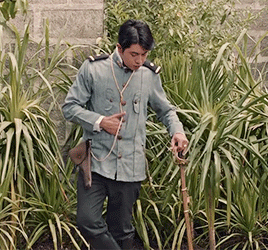
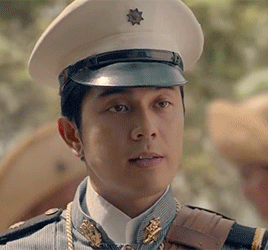
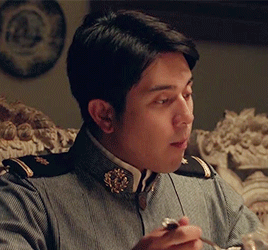
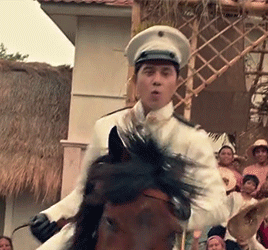
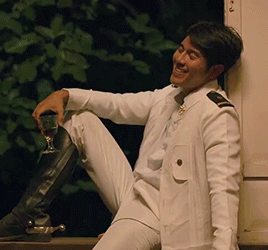
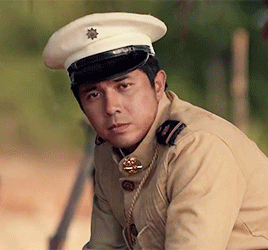
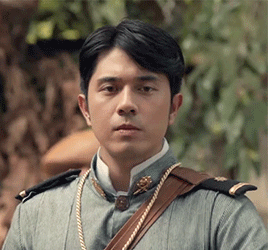
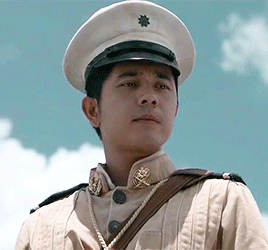
Aguila Bayaning Bulakeño Dugong magiting
148 notes
·
View notes
Photo




del pilar bros
64 notes
·
View notes
Photo


At ang ating mga bayani, habang tinitingala ng madla, ay walang malay sa panganib na naghihintay sa ilalim ng kanilang mga pedestal.
62 notes
·
View notes











